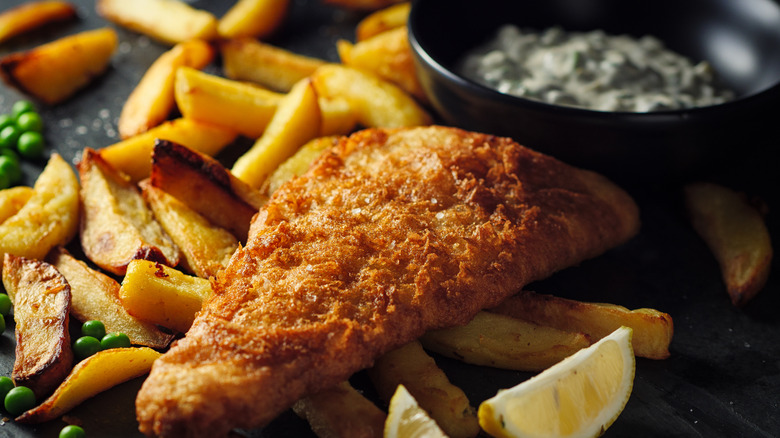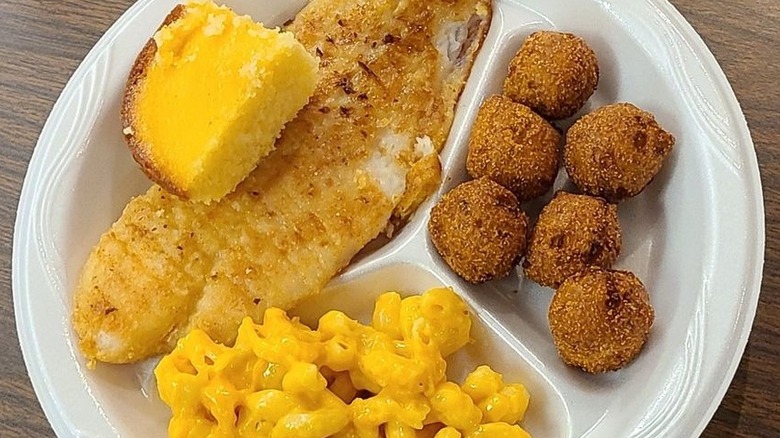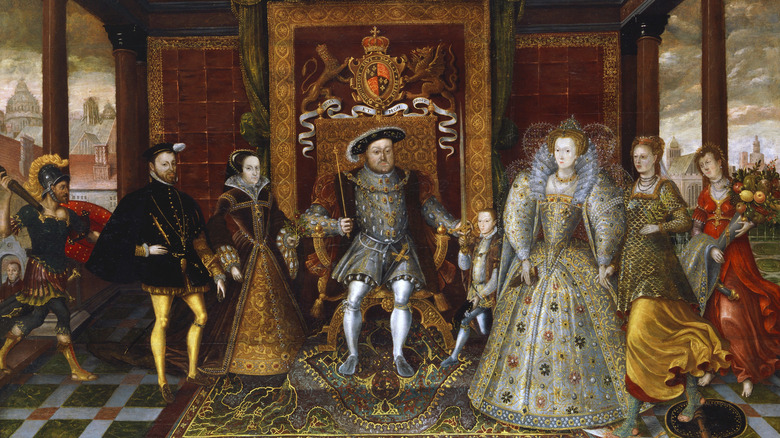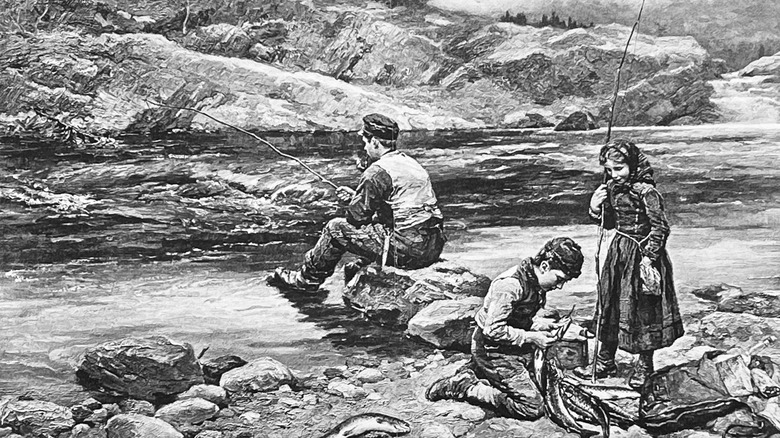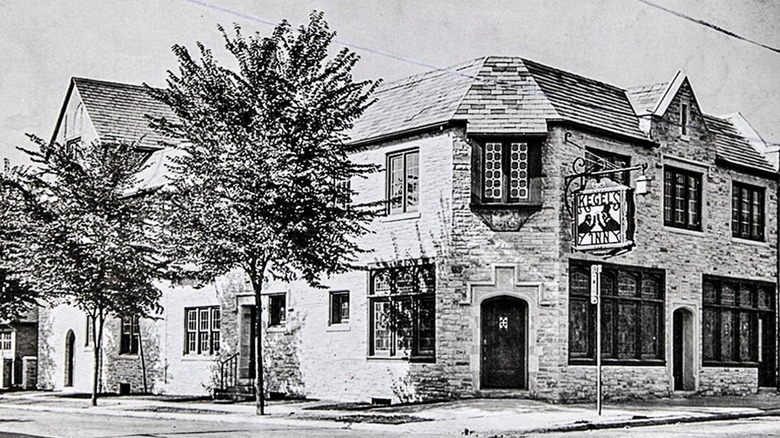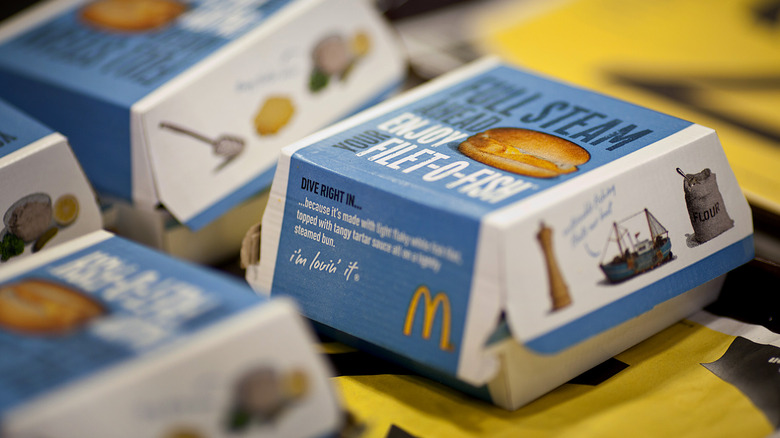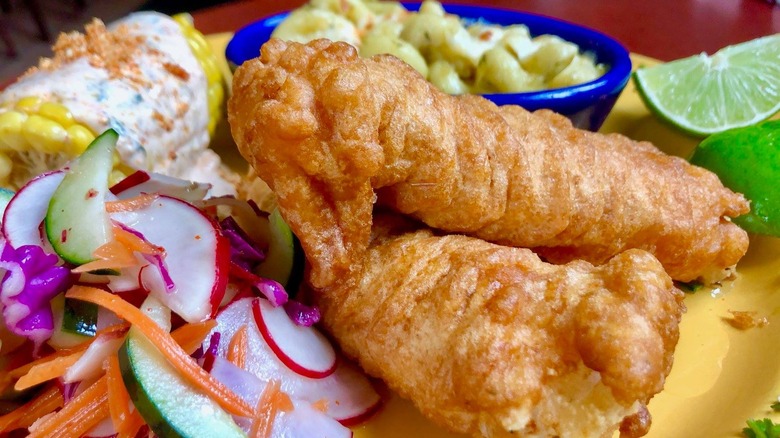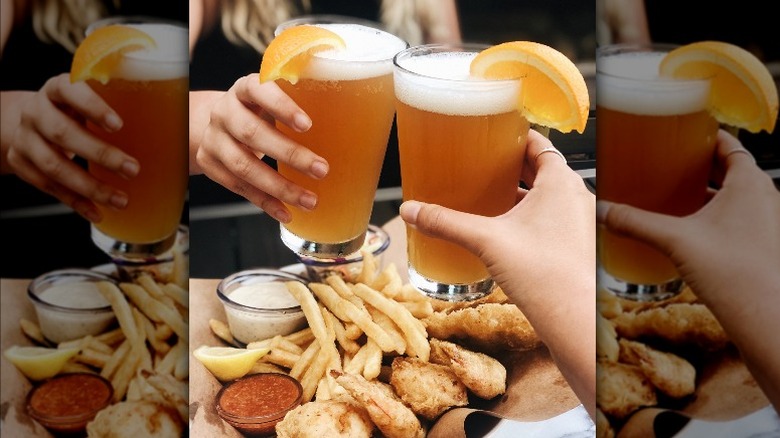A History Of Lenten Fish Frys
Weekly fish frys are commonplace in the U.S., where churchgoers will gather together over meals of crisp, battered fish — usually cod, if you're in the Midwest, or haddock if you're in the Northeast. The most typical sides look like ones that might come with a fried chicken meal — coleslaw, some form of potatoes like potato salad or potato pancakes, and bread.
As a young food-obsessive, I always had one question though: Why fish?
There actually isn't really one simple answer to this question.
Fish frys are common during Lent
For those less familiar with the tradition, fish frys are common during Lent, the forty-day period leading up to Good Friday during which the Church requires that its members abstain from eating meat (or more specifically, the "flesh of warm-blooded" animals) as a form of penance. There are no prescribed rules or mandates on what should be eaten instead. Fish are cold-blooded, so many think that it was just a natural alternative for protein, especially since fish have always been important in Christian theology.
That's not the only answer though.
Fish was associated with the Catholic Church
Another popular theory, which takes us overseas to England, suggests that the choice grew out of political and economic pressures in the 16th century. By that time, fish was a popular staple since it was fairly cheap, easy to cure and preserve, and filling. But then came King Henry VIII's dramatic exit from the Roman Catholic Church, spurred by the Pope's refusal to annul his marriage so that he might marry Anne Boleyn. To get around that obstacle, Henry VIII founded the Church of England, spicing up history textbooks for high schoolers everywhere.
Since fish was heavily associated with the Roman Catholic Church, the food suddenly became political. As the Church of England grew, the popularity of fish dwindled. It wasn't until after Henry VIII left the throne in the 1540s that his successor, Edward VI, helped out suffering fishermen by once again encouraging his subjects to eat fish.
European immigrants brought fish frys to the American Midwest
So how did Lenten fish frys kick off in America? Most people point to early European immigrants who settled in Midwestern states like Wisconsin, Ohio, and Indiana. These immigrants brought their Catholic practice of abstaining from meat (plus their love of fishing) with them. Meat was also more expensive, so fish was a more affordable alternative at a time they must not have had much to spare.
Fish dinners helped to disguise Speakeasies during Prohibition
Interestingly, Prohibition might have also played a part in establishing fish frys as a full-on event, transforming a simple dish into a social gathering. According to Wisconsin lore, bars and taverns in the 1920s were faced with a business dilemma after alcohol was declared illegal. Since fish was plentiful, cheap, and pretty easy to cook, many of them started to sell fish dinners to stay afloat, serving them with sides like coleslaw, potato salad, and fries. Some bars even used the fish dinners to disguise speakeasies, taking advantage of the fragrant oil smell.
McDonalds added Filet-o-Fish to its menu in the 1960s
Soon, fish frys became a regular fixture in the U.S. Churches began to host fish frys as fundraisers and events for their parishes to come together during Lent. After the end of Prohibition, restaurants added their own versions of fish dinners to lure in swaths of Friday pescatarians. In the 1960s, McDonald's even added the Filet-O-Fish sandwich after one franchise owner in Ohio noticed that his Catholic base was seeking out fish sandwiches elsewhere.
Where to find a fish fry
Nowadays, fish frys are still common in the Midwest and Northeast during Lent (and sometimes even beyond those months), especially in places like upstate New York and Pennsylvania that were other popular settling grounds for Roman Catholic immigrants. In Wisconsin, which some point to as the site of the earliest American fish fry, there are so many restaurants and bars serving them up that you can go on your own fried fish crawl.
Fish frys have been a tradition (or even a festival) for decades
Some fish frys have even grown into full-blown festivals, with music, fireworks, and state fair vibes. One annual fish fry in Amo, Indiana, has been going on for sixty-plus years. Members of a primarily Hispanic Catholic church in St. Louis created what they called a Mexican Fish Fry. Instead of the typical bread, slaw, and potato salad sides, they started dishing out chiles rellenos and quesadillas.
Fish frys bring community together
Though the batter recipe and type of fish might change from region to region, as might the sides that come along with it, the community aspect of a fish fry remains the same.
And whether or not you observe Lent, fish frys are usually open to everyone in town (and those who are just passing through, maybe even on a fish fry crawl). They're well worth checking out if you can.
